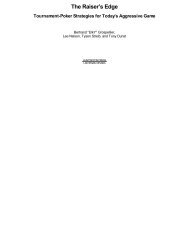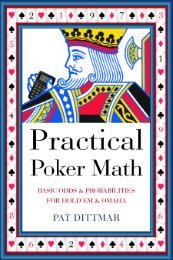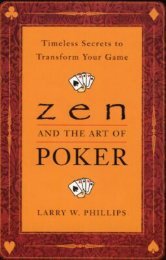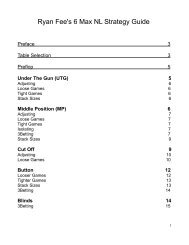Create successful ePaper yourself
Turn your PDF publications into a flip-book with our unique Google optimized e-Paper software.
Set-Mining<br />
127<br />
Sets are one of the biggest money makers in any poker player’s<br />
database of hands. They have the potential to win some massive<br />
pots. Set-mining can be very profitable. Looking back to Table<br />
11, you’ll see that a pocket-pair flops a set or better about 12%<br />
of the time. Many players have gotten into the habit of calling<br />
with any pocket pair and then simply folding if they do not flop a<br />
set. However, if they do flop a set, they do their best to get all<br />
the money in the middle. Let’s begin approaching set-mining<br />
through the most optimistic eyes.<br />
Thinking in terms of ratios, the odds against a pocket pair<br />
flopping a set are about 8:1. So, let’s assume that every time you<br />
flop a set, you’ll be able to get all-in. Let’s say your opponent<br />
raised to $1 preflop. You called the $1 preflop with the idea of<br />
flopping your set or folding. Let’s find out how much money<br />
you’d have to win in order to break even.<br />
0.12($x) + 0.88(-$1) > 0<br />
0.12x - $0.88 > 0<br />
0.12x > $0.88<br />
x > $7.33<br />
In order to break even, you’d have to get about $6.33 postflop<br />
since his $1 is in preflop too. So, if we could call with a pocket<br />
pair and win our opponent’s stack every time, we’d always have<br />
to make sure he started with about 8 times more than what we<br />
had to pay to see the flop, and we’d be all set. But, it’s not that<br />
easy. There are many factors that make the need for our implied<br />
odds to get higher and higher.









